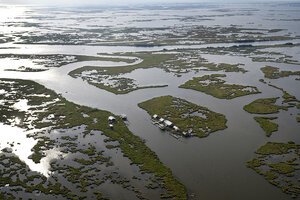
The Christmas tree in your home was grown with a purpose. It was planted and nurtured until it had matured enough for sale. It was then cut down and hauled to town, where families scowled over it in search of the perfect sapling for this year’s holiday season celebration.
Then comes the decorating, the gifts beneath its boughs, and joyous moments near its gentle light.
But when the ornaments leave the branches, its purpose ends there. Like torn gift-wrapping paper, the tree then departs for the final leg of its journey, which in some cases is a landfill.
The holidays generate more of it than any other season. A program in Louisiana uses discarded Christmas trees to help rebuild shorelines – symbolizing progress on a larger challenge of dealing more wisely with waste.
Louisiana takes a different path. For more than 20 years, the City of New Orleans, Louisiana National Guard, and the state’s Wildlife and Fisheries Department have partnered to extend the function of expired holiday trees by dumping thousands into coastal marshlands. Once there, the trees help bind the disappearing shore as they slowly decompose into sediment. Every little bit helps, coastal officials say. In nearly a century, Louisiana has lost roughly 2,000 square-miles of marshland as a result of human engineering and environmental degradation such as oil spills.
The most festive time of year – the winter holidays – is also the most consumptive. Americans generate about 25% more trash than usual between Thanksgiving and New Year’s Day. That considerable increase equates to about 25 million tons of additional waste during the holidays, according to estimates cited by Stanford University and the University of Colorado. That’s why efforts like the one here in Louisiana are important – mitigating a significant problem and perhaps engaging the public in positive ways.











